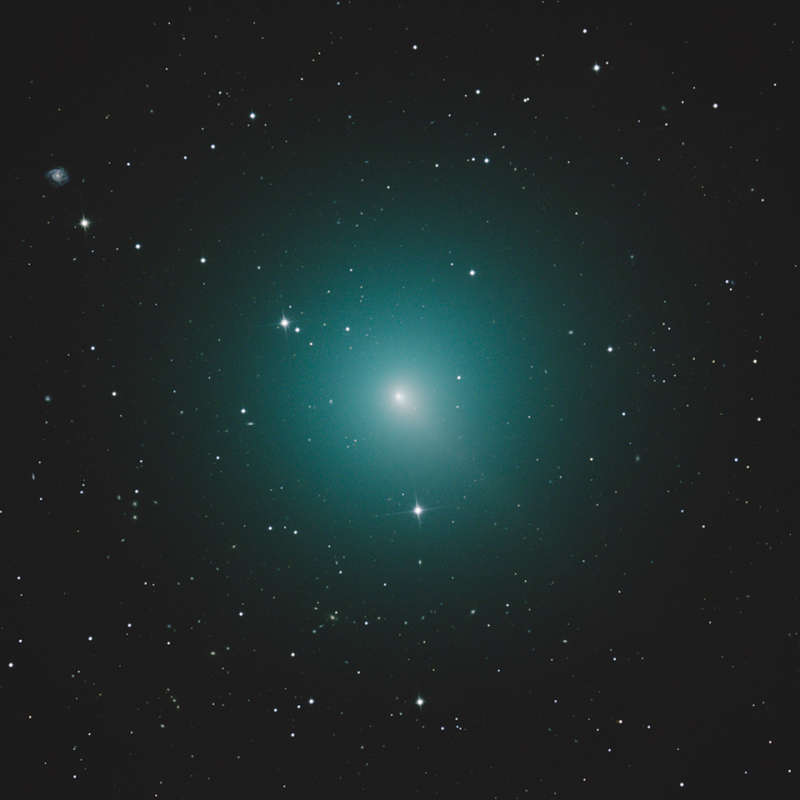
|
Explanation: Periodic Comet 46P/Wirtanen is now the brightest comet in the night sky, but too faint to be seen by eye. From dark sky sites it could just become naked-eye visible though, as it's 5.4 year long looping orbit takes it closest to Earth and the Sun in mid December. Fluorescing in sunlight, its spherical coma is about half the angular size of a full moon in this southern hemisphere telescopic view from November 7. Then the comet was about 2 light-minutes away or 35 million kilometers from Earth-bound telescopes, so the pretty greenish coma seen here is around 150,000 kilometers across. That makes it about the size of Jupiter. The stack of digital images also reveals a very faint tail extending toward 4 o'clock with a distant background galaxy notable at the upper left. As a regular visitor to the inner Solar System, comet 46P/Wirtanen was once the favored rendezvous target for ESA's comet exploring Rosetta mission.
|
January February March April May June July August September October November December |
| ||||||||||||||||||||||||||||||||||||||||||||||||
NASA Web Site Statements, Warnings, and Disclaimers
NASA Official: Jay Norris. Specific rights apply.
A service of: LHEA at NASA / GSFC
& Michigan Tech. U.
Based on Astronomy Picture
Of the Day
Publications with keywords: comet
Publications with words: comet
See also:
- APOD: 2025 February 5 Á Comet G3 ATLAS Setting over a Chilean Hill
- APOD: 2025 February 2 Á Comet G3 ATLAS Disintegrates
- APOD: 2025 January 28 Á Comet G3 ATLAS over Uruguay
- APOD: 2025 January 26 Á The Many Tails of Comet G3 ATLAS
- Comet G3 ATLAS: a Tail and a Telescope
- APOD: 2025 January 21 Á Comet ATLAS over Brasilia
- APOD: 2025 January 20 Á Comet ATLAS Rounds the Sun
